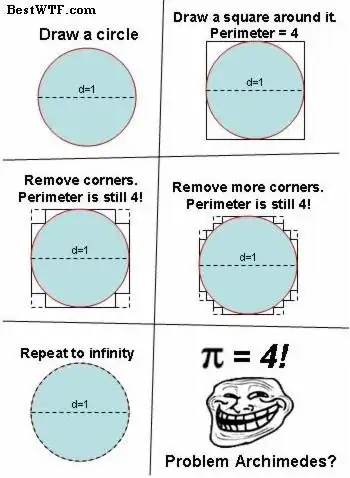All of the shapes have area greater than that of the circle, therefore the limit must be at least as large as the area of the circle.
A similar process drawing shapes on the inside of the circle would give you another sequence of areas whose limit must be at most as large as the area of the circle.
However, the two limits are equal. And so, by the squeeze theorem -- known to the ancient Greeks in this case as the method of exhaustion -- both of these limits are equal to the area of the circle.
There is a technical point assumed here: that the notion of area makes sense for circles!
One of the general approaches to the notion of area is to define the "outer area" of a general shape by covering it with a grid and adding up the area of all of the rectangles that partially lie within the shape. If you consider all possible grids, there is a greatest lower bound on the area thus computed, and this bound is called the "outer area" of the shape.
A similar method defines the "inner area". Then, the area of a shape is defined if and only if the inner area equals the outer area.
So, using this method to find the area of a circle is actually perfectly rigorous even by modern standards!
Also, it's pretty easy to see that this method is computing the values of Riemann sums for the integral that computes the area of the circle.
As a final general point, never trust a purported proof with a trollface in it.
